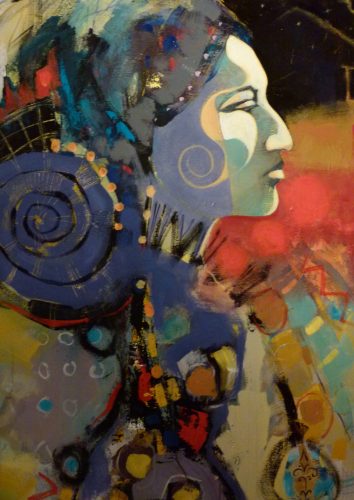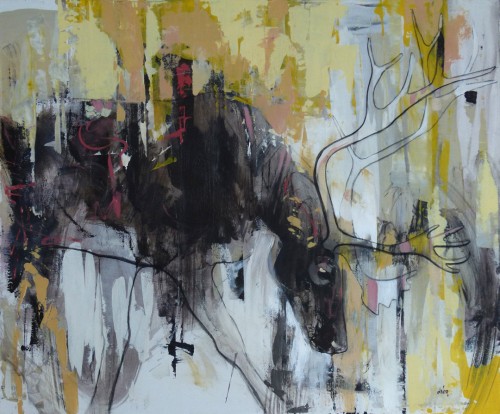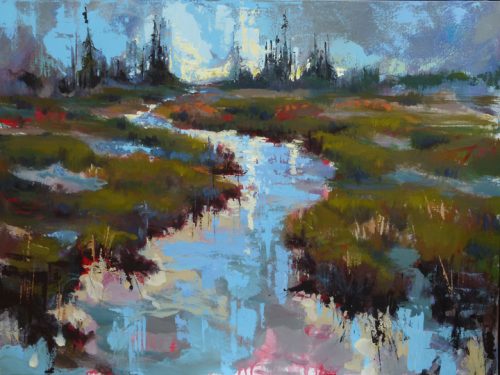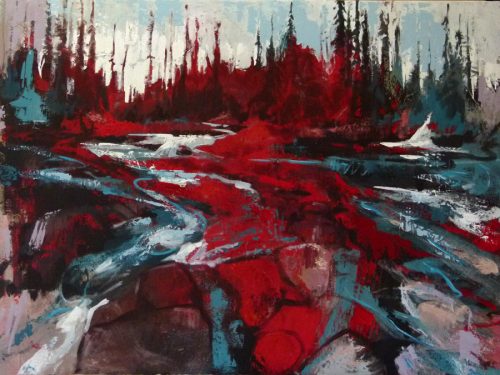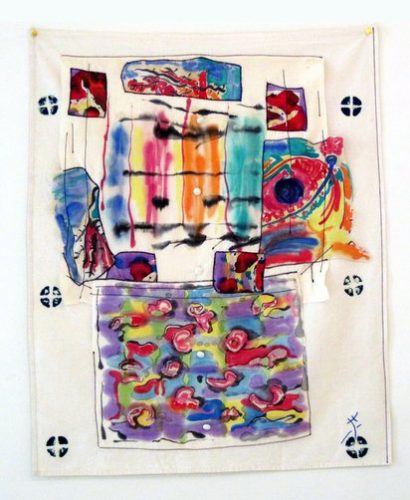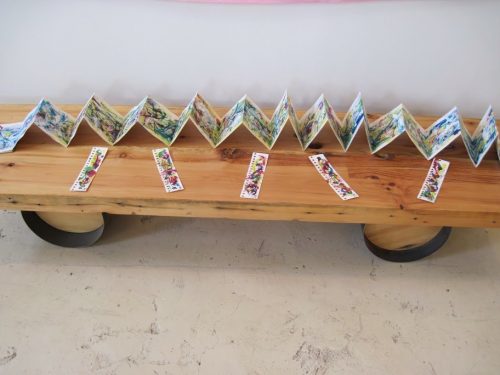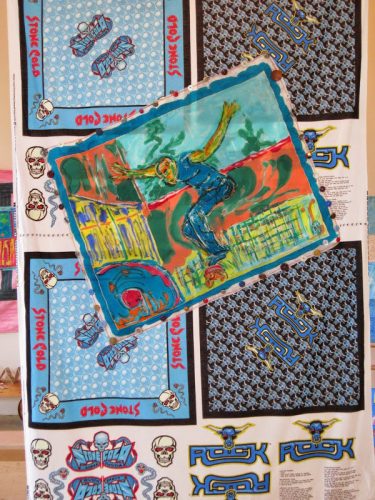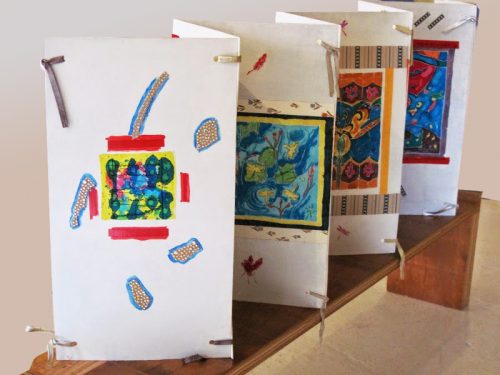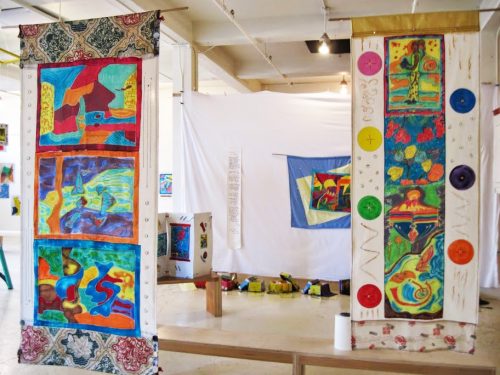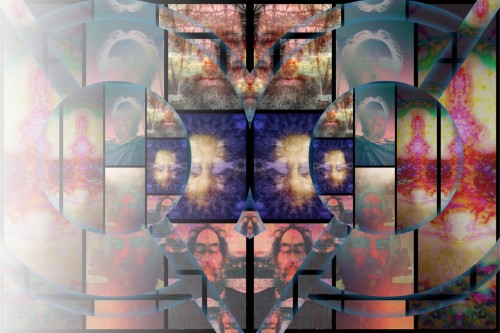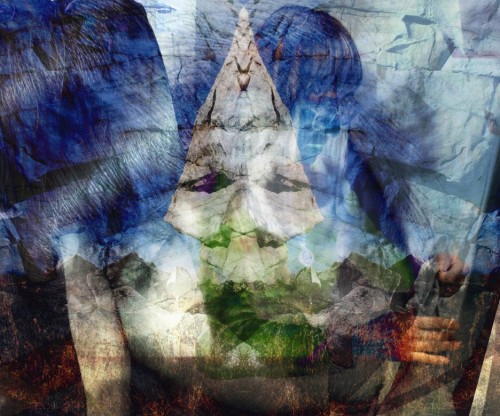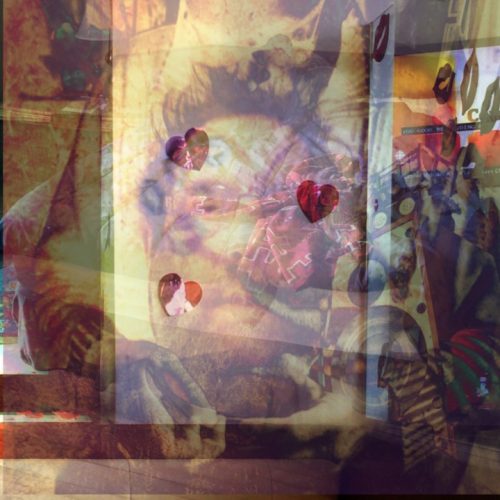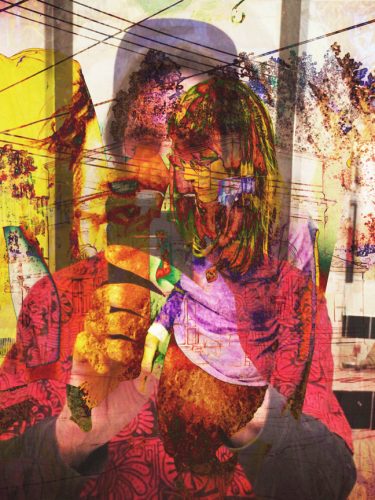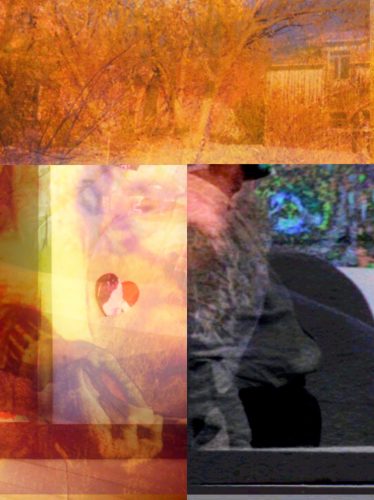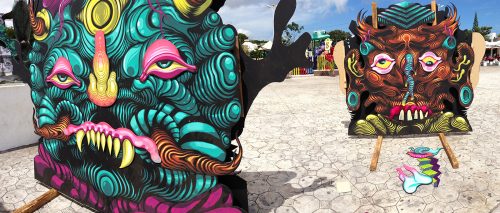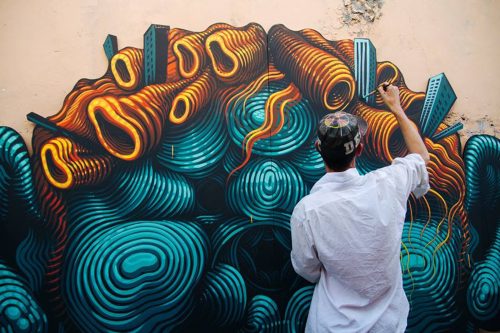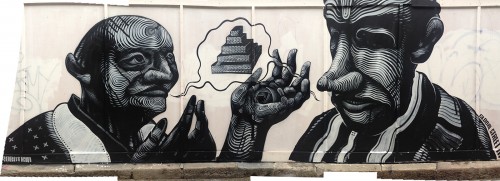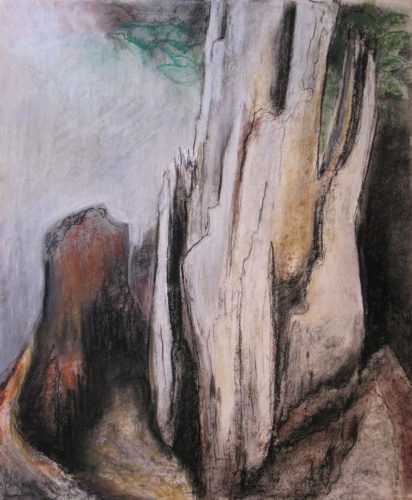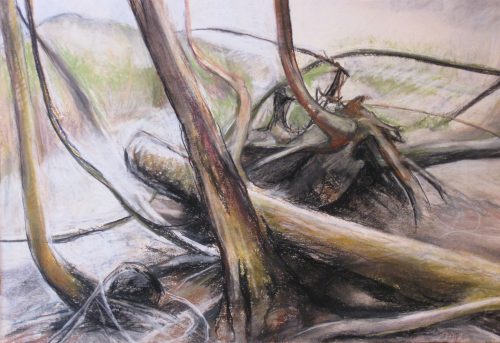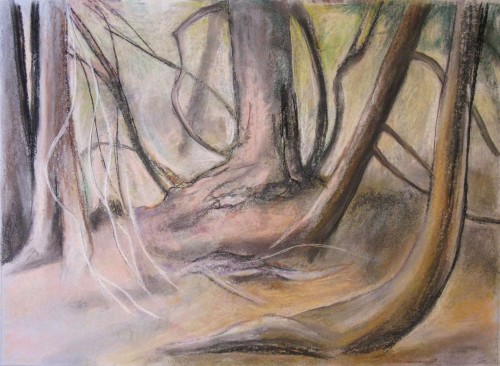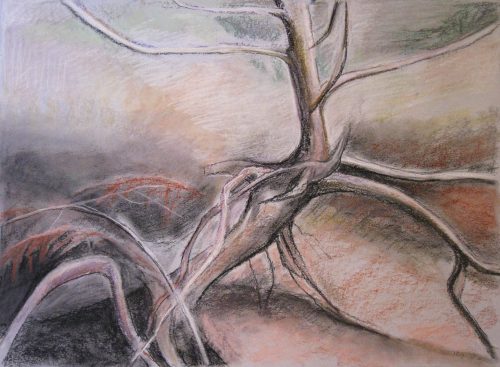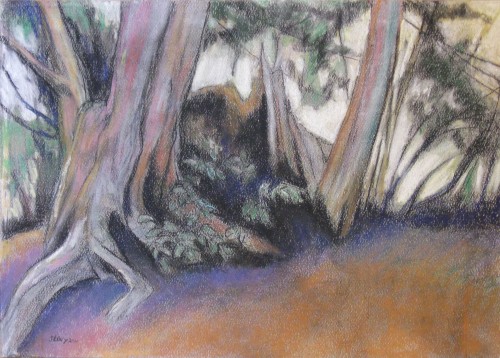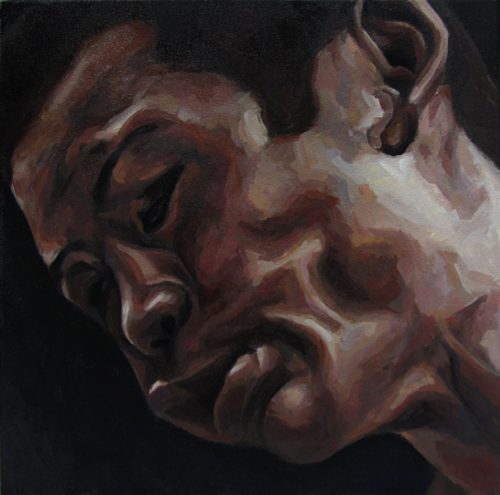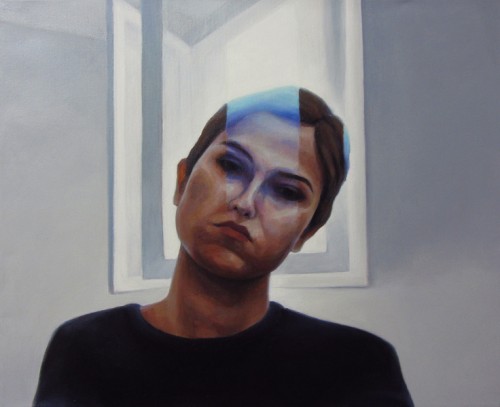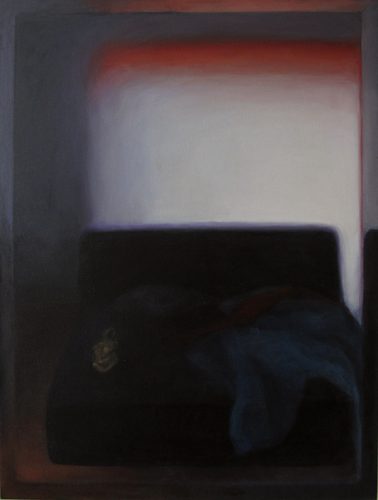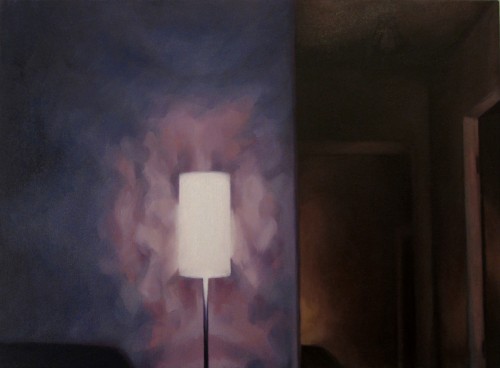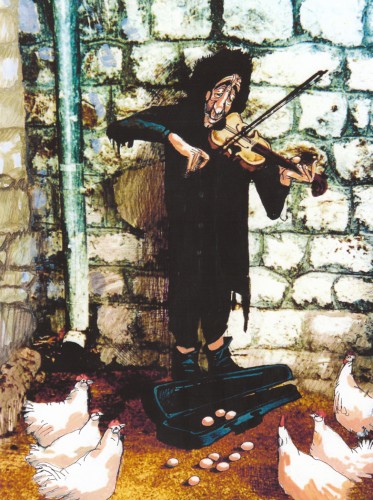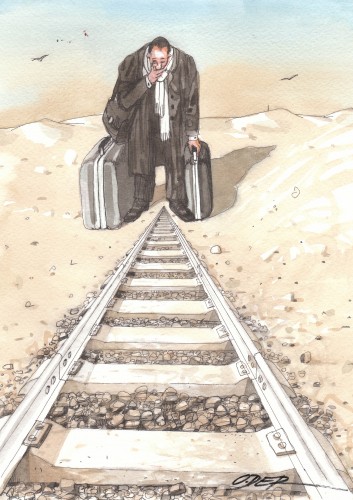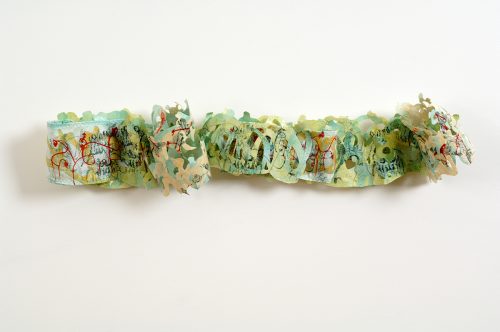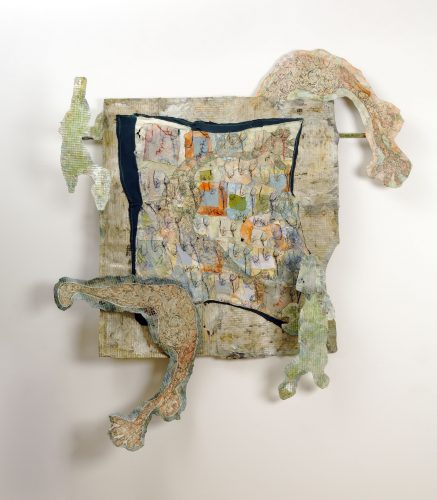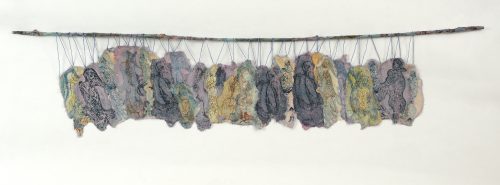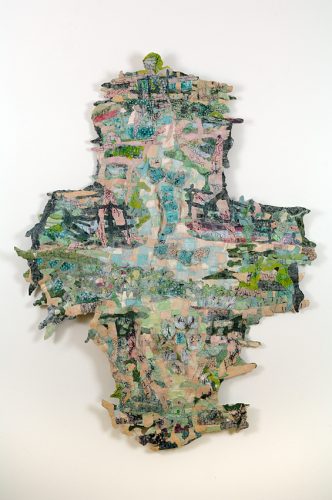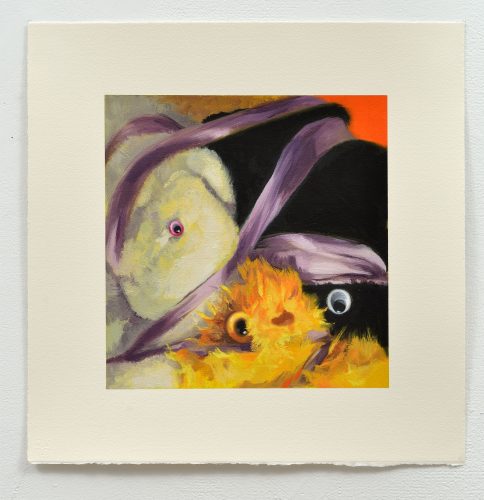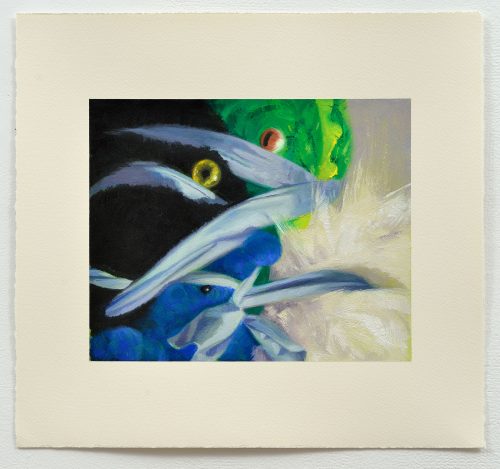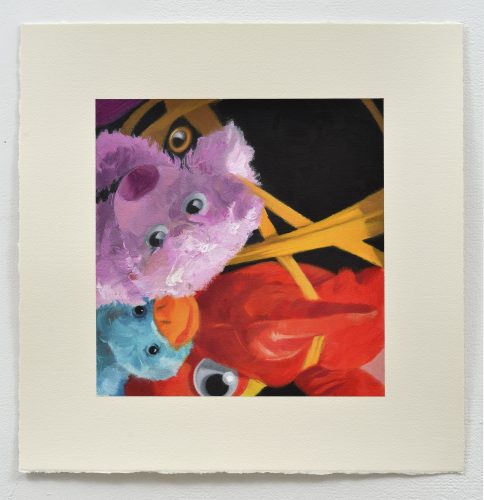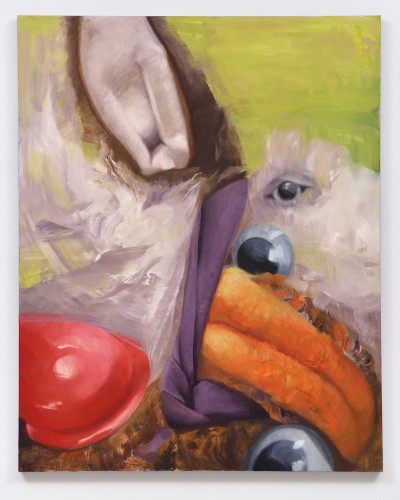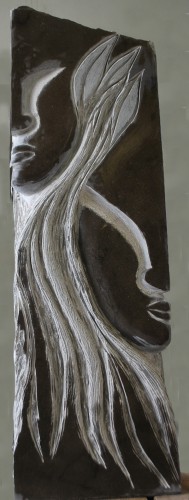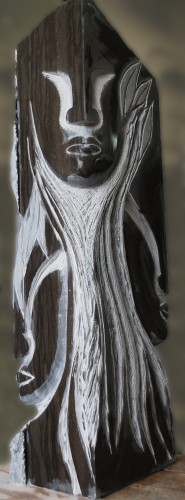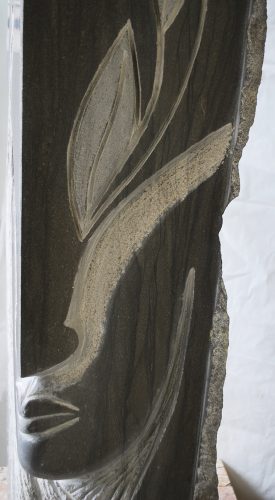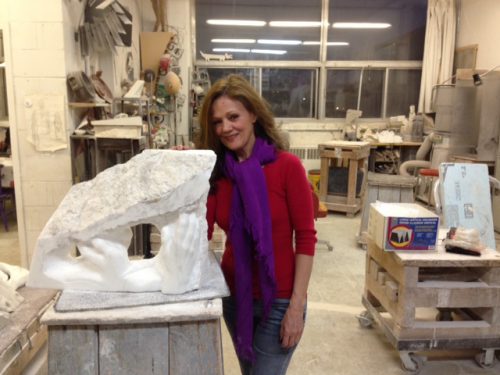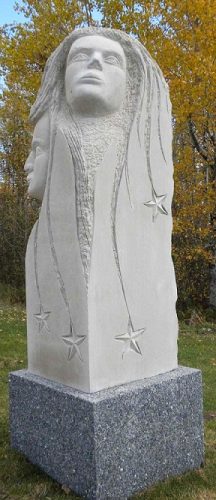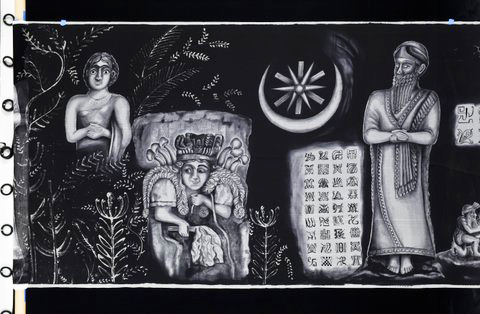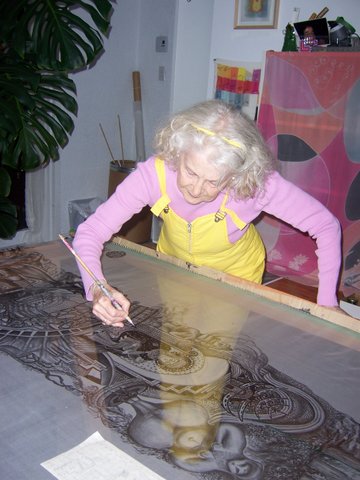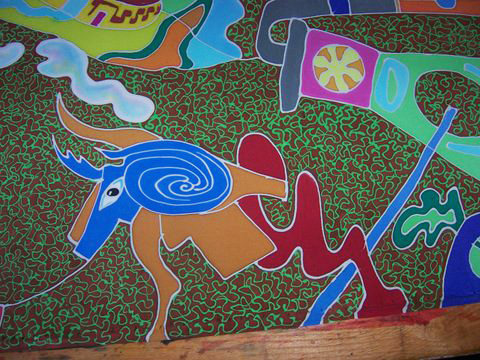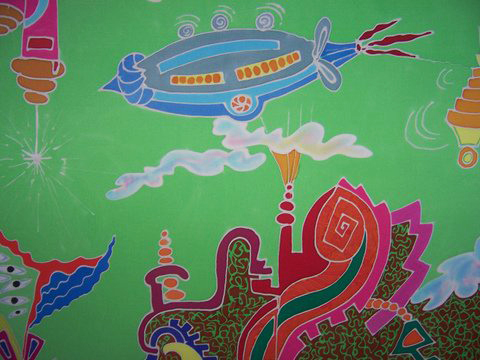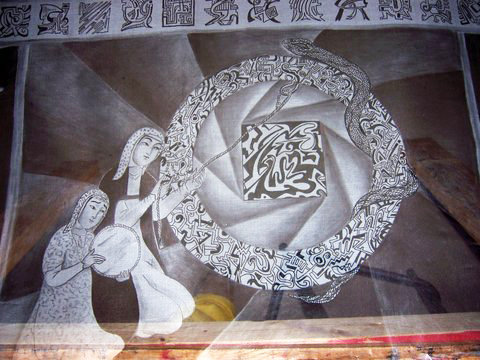We regularly see, read or hear works of art only when they are completed or when they are considered finished by their creator. The following statements are from various visual artists who have previously been showcased on Montreal Serai over the years. Their remarks are glimpses into a process of creation and inspiration which have materialized into unique and personal works of art in their chosen media.
Dominique Normand
Since 2008, countless travels into Northern Quebec have brought me closer than ever to the Native Culture and the Wilderness. 60,000 km of endless Black Spruce forest, clear cut territories, lush marsh lands, hunting and fishing trips are starting to sink in. For a minimum of 3 months a year, immersed in Cree traditional knowledge, tool making, medicinal plants, survival skills, bush living, tanning, crafts, cooking, sewing, spiritual awakening, I have learned, shared, taught, painted and filmed the people, the land and the wildlife.
In Northern Quebec, the animal kingdom is omnipresent and intimately entwined with the Cree’s lifestyle and everyday activities. Fishing, hunting, and trapping are a constant conversation, practice and concern.
Animals speak and inspire me in a magical way. They bring me to a place in which there are no boundaries between us, and always, the divine reveals itself. They speak to me in their unique voice, by their appearance, behaviour, movement and patterns. They help me realize how intricately every aspect of nature is woven into my life. They come to me in dreams and in waking. Ravens and crows call to me, warn me, teach me. In my work, the forest is a strong symbol of the unconscious. It reflects the untapped primal forces to which we do have access. Marshland is an environment where life and death mingle in harmony. Decomposition is part of the transitional process. It is my favourite landscape subject.
Nature is my beacon, the ultimate model of perfection. From landscape to landscape, my own process pushes me to understand its mysteries and ever changing manifestations. I criss-cross villages and paths to satisfy my search for adventure, while multiplying exquisite encounters on the way. Each of my pilgrimages carries me to ever wilder landscapes, through forests and swamps, rivers and mountains.
SéKAI SéKAI
Snippets
A sunny May morning and I sit in my kitchen at a circular blood red stained table listening to a classical movement. Before me are pen and paper, an Oxford desk dictionary and several scrap notes filled with my thoughts on art, imagination and inspiration and the process which it takes for me to set my antennae on course towards the creations that float through my mind. For sustenance, I have a newly baked French baguette, freshly made guacamole and two liquids – lemon water and a small glass of California Zinfandel. My plan is set for about an hour and a half to come up with a route and sign posts to my inner exuberance.
Books abound with formulas and exercises to stimulate creativity, but I have learned over the years to listen to my own peculiarities. Surrounding my life early on and through the years with other creative types, I have culled many steps. First and foremost I keep an open mind. I am willing to explore, to overcome my fears, to take courage and engage, to take action and to make that first gesture. I develop a concrete plan of sequencing my inner voice in response to my intuitive consciousness. I take the time needed to create. Daily activity requires repetition of actions and from there I design routine rituals that open my stream of consciousness.
I expand my vision weekly, monthly and yearly. In my early stages I feel like a hydra with many tentacles reaching out everywhere. Then comes the filtering – tuning into that which is in front of me and tuning out that which doesn’t feel in rapport. What is the palette I feel most engaging? Am I committed to my course of creativity? My personal peculiarities have me examining tastes, smells, hungers, sights and sounds which I sort into the next piece of work that my fancy asks of me. I go to my favorite place, talk to my muses, put in the ingredients and with time new forms begin to appear.
David Duchow
My initial response to the question of inspiration in my photographic and video endeavours is music… specifically the poetry and music of Australian, Steve Kilbey. Much of what I do involves his work.
The darkroom was an inspiration. I used to obsess in the alchemy of the darkroom – that magic replaced in 1998 by digital technology. Technology itself is an elevating and consuming process.
Having been bi-polar since my youth, I found that doing art, since the age of 16 or 17, has been an antidote to depressive periods. A hermit’s existence is part of the art process for me.
Jason Botkin
I’m mostly turned on by figurative works…bodies turn inside out, dressed in their emperor’s finest; bodies unwrapped to explore inner worlds, emotions, and ideas; vapors and clouds permeate architectural structures of unknown purpose; buildings chart impossible perspectives, cities in chaos; geometric forms emerge from and are swallowed by the imagined inner workings of internal landscapes. These various elements form a tapestry of self divined utopias and personal myths. These offerings are made with the belief that change is possible, when we reinterpret social identities and then test deeply entrenched, and often flawed social realities.
Sandra Levy
To quote Lucie Rei, the English potter (1902-1983), “Art theories have no meaning for me. Beauty has. This is my philosophy. I do not attempt to be original or different. Something, which to describe I am not clever enough, moves me to do what I do.”
Although I am aware of contemporary trends in art, such as conceptualism, my work harks back to the more ancient aim of art, which is visual representation. My works have some similarities to that of Emily Carr, not only in subject matter, but in approach, that is, a response to my environment and interpretation through the lens of my personal affinity. I love the graceful pattern of branches and trunks of trees, and the way that stumps, even when half-rotten, still convey the elegance and majesty of the living tree. My art reflects my love of plants, and my response to the dynamic and expressive qualities found in their forms, whether the plant is alive or dead. A decaying tree trunk has a form of grandeur found in castles or mountain ranges.
I also love painting the human body. The act of manipulating the material and design elements is a source of delight for me.
Shelley Miller
My main inspirations are pattern, design, architecture and the relationships between all these things. I am also interested in taking small, domestic craft practices like sewing and quilting and bringing them into the world of architecture and public spaces.
Recent work: Mural for the new MUHC – Glen Site. Located at entrance of the Royal Victoria wing, this 7.5m x 8.5m mural is a reference to quilting, natural ecosystems like bee hives as well as molecular biology. It symbolizes the ecosystem of a hospital: organized chaos.
Materials: hand-built ceramic, mosaic, onyx, photo transfer on ceramic.
Title: Structura habitata
Year: 2014
Liza Sokolovskaya
Inspiration is wonderful. Seeing something that urges you to create is one of the strongest drives for me. Inspiration is unpredictable and can spring from the most mundane task. The way the light falls on a wall or the positioning of limbs can be the trigger for a whole new body of work.
I am an avid collector of images and I scour digital publications, blogs and other websites in search of images that will catch my attention. I will then sort the found material by recurrent themes that will allow me to construct a new piece or a series.
Oleg Dergachov
For me it’s very important to involve as much positive creative energy in my works, as possible. I always admire the life and people around me. Our message in art should be light and positive. My artworks with humor, it helps me and my visitors of my studio to survive in this crazy world. I enjoy different media, such as bronze, works on paper, painting, which improve my way of thinking and creativity. It is a wonderful thing to feel depth and volume of sculpture, magic of color, spot and fine line of an etching.
It is a pleasure to surprise my visitors and slowly discover the divine world of fantasy to the people.
Naomi Bellos
Once upon a time, in the name of art, I dragged T.V. monitors with candles stuck on them across the Californian desert. Now I content myself with sewing and printing on little pieces of silk and rice paper from my scrap box. I have always made art in some form or another which has always been about the same thing. I make art as a way of connecting with what I feel to be the essence of life itself. If I go for long periods of time without making art I feel disconnected and destructively bored. But the resolving of the problems to bring an art piece to completion fills me with a sense of unequalled satisfaction. So I come back to it again and again.
I call my working method “structured improvisations” whereby I have a point of departure that allows for improvisation, chance and re-focusing to bring a work to fruition. Wanting to express an idea that cannot be fully contained in a two dimensional format, I am forced to work with many elements simultaneously. I go back and forth between drawings, different printing techniques and three dimensional maquettes until a solution is found. As I assemble these elements, I feel more like a choreographer than a printmaker. The process is often long and labourious but the results, when they work, are majestic and truly operatic.
Lorraine Simms
My paintings and assemblages are inventions, or re-inventions, that reflect an imaginative process of transformation.
Since 2010 my artworks have incorporated plush toy animals. I combine these garishly coloured artifacts of popular culture into enigmatic sculptural forms. Bound into impossible relationships these stuffed animals morph into atavistic beings, suggesting traditions within Surrealism. My paintings frame details of these assemblages, rendering their forms, textures and lurid colour combinations. As in a Grimm’s story, these transformed creatures evoke a shadow side – anxiety lurks behind their playful façades. As real animals gradually disappear from our increasingly developed landscape my works evoke the loss this symbolizes, the loss of any genuine encounter with the wild.
Doris Bouffard
Mes deux principales sources d’inspiration sont l’humain et la nature. Dans la représentation du corps et des visages, on retrouve souvent un élément de la nature. Les yeux de mes personnages scrutent les profondeurs de l’horizon, traduisent somme une interrogation remplie d’inquiétude sur l’avenir qui leur est réservé.
La compréhension du corps humain, l’expression qui s’en dégage, trace comme une ligne de vie; à travers eux, je pose un regard sur le monde.
C’est pour moi un besoin, une nécessité de découvrir toutes les possibilités de faire transparaître dans une œuvre quelque chose qui arrête le regard, qui traduit un langage d’où naît la beauté. Mon but est de trouver l’harmonie entre nom âme et nom art, dépasser la matière pour arriver au spirituel. Atteindre une vérité qui porte au-delà du visible.
Graziella Malagoni
My work has evolved from a visual-arts background, passing through all the different mediums and techniques thought in art schools. Since I have learned to paint on silk I have been passionate about promoting it as a valid art medium.
I know silk intimately from early childhood. The luminous surface lends itself to suggesting images from deep in my memories: the rich heritage of the colorful Italian traditions, their art, rituals and landscapes, as well as the wealth of pageantry and devotional icons from other cultures. Silk is the fabric that makes its own statement, on contact it is soft and yielding, natural, lustrous, apparently fragile and yet strong enough to be a parachute.
When I paint on silk my gestures are spontaneous, no need to start with a planned design hence the first ‘geste’ inspires the following ones. I am inspired by the observation of our human search for meaning, from historical and cultural studies, philosophy, spirituality. From a variety of sources I build my themes. I let the images come and define the work without judgement of sequential meaning.
Today I revisit the fragments of my memory scattered like pieces of a large lived puzzle. The regurgitation of my unconscious appears in painted form; the mistakes on the silk can be foundations for new patterns and take me in unexpected and exciting new directions.
The visual language depicts an inner experience apart from any aesthetic or moral considerations. There is no erasing while painting on silk, only ever challenging solutions…a real metaphor for life.
